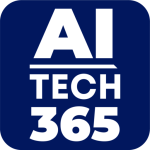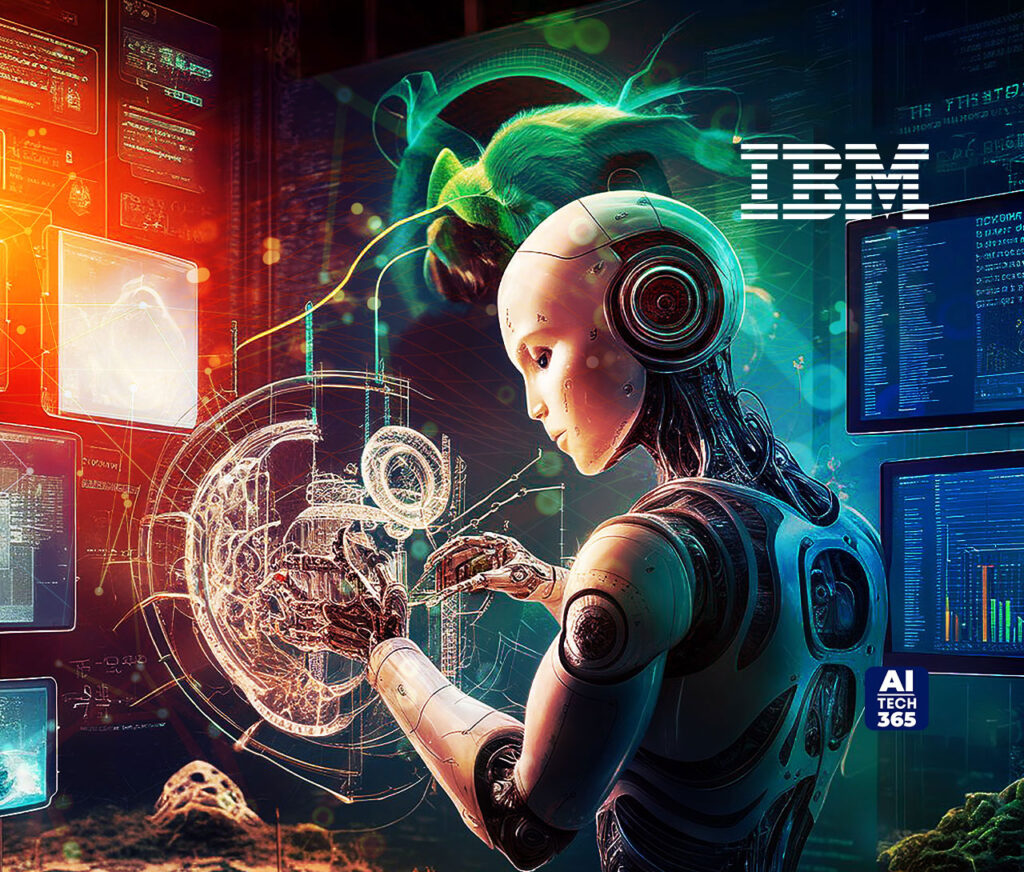IBM announced several new updates to its watsonx platform one year after its introduction, as well as upcoming data and automation capabilities designed to make artificial intelligence (AI) more open, cost effective, and flexible for businesses. During his opening keynote, CEO Arvind Krishna will share the company’s plans to invest in, build and contribute to the open-source AI community as a core part of IBM’s strategy.
“We firmly believe in bringing open innovation to AI. We want to use the power of open source to do with AI what was successfully done with Linux and OpenShift,” said Krishna. “Open means choice. Open means more eyes on the code, more minds on the problems, and more hands on the solutions. For any technology to gain velocity and become ubiquitous, you’ve got to balance three things: competition, innovation, and safety. Open source is a great way to achieve all three.”
IBM released a family of Granite models into open source and launched InstructLab, a first-of-its-kind capability, in collaboration with Red Hat
Furthering its commitment to the open-source AI ecosystem, IBM has now open-sourced a family of its most advanced and performant language and code Granite models. By open sourcing these models, IBM is inviting clients, developers and global experts to build on these strengths and push the boundaries of what AI can achieve in enterprise environments.
Available today under Apache 2.0 licenses on Hugging Face and GitHub, the open-source Granite models stand out for their development process, quality, transparency and efficiency. The Granite code models range from 3B to 34B parameters and come in both base and instruction-following model variants, which are suitable for tasks such as complex application modernization, code generation, fixing bugs, explaining and documenting code, maintaining repositories and more. The code models, trained on 116 programming languages, consistently reach state-of-the-art performance among open-source code LLMs across various code-related tasks:
- Testing by IBM found that the Granite Code models overall show very strong performance across all model sizes and benchmarks, often outperforming other open-source code models that are twice as large compared to Granite.
- Testing by IBM on benchmarks including HumanEvalPack, HumanEvalPlus, and reasoning benchmark GSM8K showed Granite code models have strong performances on code synthesis, fixing, explanation, editing, and translation across most major programming languages, including Python, JavaScript, Java, Go, C++, and Rust.
- The 20B parameter Granite base code model was used to train IBM watsonx Code Assistant (WCA) for specialized domains. It also powers watsonx Code Assistant for Z — a product designed to help enterprises transform monolithic COBOL applications into services optimized for IBM Z.
- The 20B parameter Granite base code model was tuned to generate SQL from natural language questions for the purpose of transforming structured data and extracting insights from that data. IBM demonstrated leadership in natural language to SQL, an important industry use case, as benchmarked by BIRD’s independent leaderboard, which ranks models according to Execution Accuracy (EX) and Valid Efficiency Score (VES).
IBM and Red Hat also recently launched InstructLab — a revolutionary approach to advancing true open-source innovation around LLMs.
The InstructLab methodology allows for continuous development of base models through constant incremental contributions, much like software development has worked in open source for decades. With InstructLab, developers can build models specific to their business domains or industries with their own data, so that they can see the direct value of AI rather than just the model providers seeing the value. IBM plans to harness these open-source contributions to bring additional value to its clients through integrations with watsonx.ai and the new Red Hat Enterprise Linux AI (RHEL AI) solution.
RHEL AI comprises an enterprise-ready version of the InstructLab, IBM’s open-source Granite models, and the world’s leading enterprise Linux platform to simplify AI deployment across hybrid infrastructure environments.
IBM Consulting is also launching a practice to help clients leverage InstructLab with their own proprietary data to train purpose-specific AI models that can be scaled to better fit the cost and performance requirements of an enterprise’s business needs.
IBM unveils a new class of watsonx assistants
This new wave of AI innovation has the potential to unlock an estimated $4 trillion in annual economic benefits across industries.[v] However, IBM’s annual Global AI Adoption Index recently found that while 42% of enterprise-scale companies (> 1,000 employees) surveyed have implemented AI in their business, another 40% of those companies that are exploring or experimenting with AI have yet to deploy their models. For the companies stuck in the sandbox, 2024 is the year of overcoming barriers to entry such as the skills gap, data complexity and – perhaps most importantly – trust.
To address these challenges, IBM is announcing several upcoming updates and enhancements to its family of watsonx assistants, along with an upcoming capability in watsonx Orchestrate to help clients build their own AI Assistants across domains.
The new AI Assistants include watsonx Code Assistant for Enterprise Java Applications (planned availability in October 2024), watsonx Assistant for Z to transform how users interact with the system to quickly transfer knowledge and expertise (planned availability in June 2024), and an expansion of watsonx Code Assistant for Z Service with code explanation to help clients understand and document applications through natural language (planned availability in June 2024).
IBM is expanding its NVIDIA GPU offerings to now offer NVIDIA L40S and NVIDIA L4 Tensor Core GPUs, as well as support for Red Hat Enterprise Linux AI (RHEL AI) and OpenShift AI to help enterprises and developers address the needs of AI and other mission-critical workloads. Additionally, to help clients accelerate time to value for AI, IBM is using deployable architectures for watsonx to enable quick AI deployment while empowering enterprises with security and compliance capabilities to help them protect their data and manage compliance controls. Read this blog to learn more about IBM Cloud capabilities.
Additionally, IBM has announced several new and upcoming generative AI powered data products and capabilities to augment how organizations observe, govern, and optimize their increasingly robust and complex data for AI workloads. Learn more about the upcoming IBM Data Product Hub (planned availability in June 2024), Data Gate for watsonx (planned availability in June 2024), and a host of the latest and planned updates on watsonx.data.
IBM previews new vision and capabilities for AI-powered automation
Hybrid cloud and AI are transforming how companies do business. The average enterprise today manages multiple cloud environments — public and private — and around 1,000 apps,[vi] each with multiple dependencies. They also deal with petabytes of data. With generative AI expected to drive up to 1 billion apps by 2028,[vii] automation is no longer an option – it is how businesses will save time, solve problems, and make decisions faster.
IBM is addressing these challenges by delivering a set of AI-powered automation capabilities that will allow CIOs to move from proactive management of their IT environments to AI-powered predictive automation. AI-powered automation will be an essential tool for driving the speed, performance, scalability, security, cost efficiency of an enterprise’s infrastructure.
Today, IBM’s portfolio of automation, networking, data, application, and infrastructure management products help businesses manage their increasingly complex IT environments. For technology business management, Apptio enables organizations to make informed, data-driven decisions about their investments by driving clarity on technology spend and how it drives business value — enabling organizations to quickly respond to changing market conditions. Clients can also combine Apptio with the power of Instana for automated observability and Turbonomic for performance optimization to help clients efficiently allocate resources and control IT spend through enhanced visibility and real-time insights, allowing them to focus more time on deploying and scaling AI to drive new innovative initiatives.
To complement these products, IBM recently announced its intent to acquire HashiCorp, which helps organizations automate multi-cloud and hybrid environments with Infrastructure Lifecycle Management and Security Lifecycle Management with products including Terraform, Vault and others. With HashiCorp, clients can easily move to and operate across multi-cloud and hybrid cloud environments.
Now, at THINK, IBM is continuing to advance its state-of-the-art in automation portfolio by previewing a new generative AI-powered tool called IBM Concert, which will be generally available in June 2024. IBM Concert will serve as the ‘nerve center’ of an enterprise’s technology and operations.
Powered by AI from watsonx, IBM Concert will provide generative AI-driven insights across clients’ portfolios of applications to identify, predict, and suggest fixes for problems. The new tool integrates into clients’ existing systems, using generative AI to connect with data from their cloud infrastructure, source repositories, CI/CD pipelines and other existing application management solutions to build out a detailed view of their connected applications.
By allowing clients to eliminate unnecessary tasks and accelerate others, Concert is designed to make teams more informed so they can be fast and responsive in addressing issues and solving problems before they happen. Concert will initially focus on helping application owners, SREs and IT leaders gain insights about, pre-empt and more quickly address issues around application risk and compliance management.
Source: IBM

